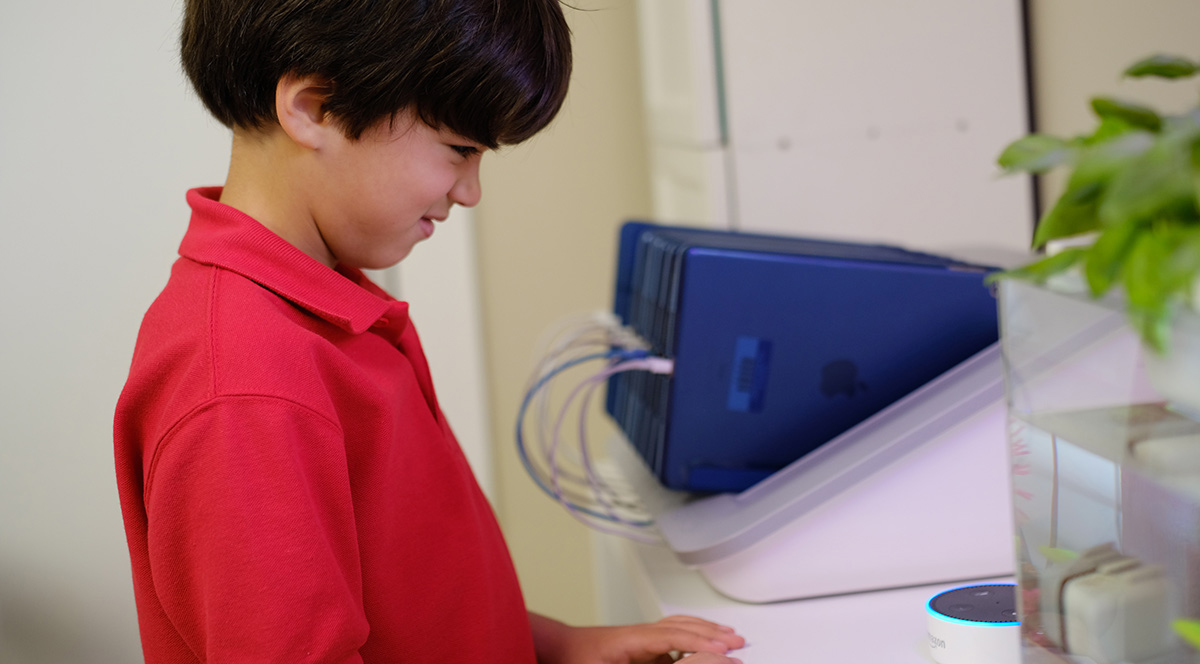The Amazon Echo is a hands-free, voice-controlled search device that uses Amazon’s Alexa. Using Alexa is as simple as asking questions. You can ask to play music, read the news, check the weather, and more! Even though none of the features that are advertised on Amazon are necessarily applicable for the classroom, the newness of the device allows you to discover tons of things it can do and new ways to use it.
The Amazon Echo is the device, but Alexa is the search engine you are tapping into. It is activated by saying “Alexa…” then asking a question or speaking a demand. When utilized in a classroom, it is an engaging way to infuse technology into math, reading, spelling, writing, and more. Not only do students enjoy getting their questions answered by Amazon Echo’s voice control, there are several ways it can be integrated into the curriculum. In addition to using the Echo as a voice-controlled search engine, you can use it for more specific inquiries and activities.
Here are some examples of how to use Amazon’s Alexa in the classroom:
“Alexa, how do you spell….?”
Since she can spell most words, Alexa is a great support to literacy. Further, since she has access to a dictionary and thesaurus, she can provide synonyms and definitions. This feature is particularly useful for dyslexic students, or students that struggle with reading, because it can help them quickly access information in an engaging way.
“Alexa, what is the weather today?”
Once you have your Echo set up and it knows your location, it can be used to give weather reports. Not only is this an excellent addition to the morning routine, students can take turns asking for a daily weather report.
“Alexa, pick a number between __ and __.”
Alexa is great as a random number generator. Similarly, you can ask Alexa to flip a coin, roll This is good for partner selection, turn taking, data collection, probability exercises, and more.
Here are some benefits of using the Amazon’s Alexa in the classroom:
Promotes independent learning
The Echo is an always-ready learning assistant that allows students to work independently. It can help reduce the frustration of doing school work that involves extensive research. This is especially beneficial for dyslexic students and those who struggle with reading because facts and information are always available.
Acts as a teaching assistant
Alexa is a very useful tool for teachers because she can assist them with a simple voice command. If it’s been a rough day, she can put on soothing music, she can read books, give news reports, and act as a timer.
Putting Alexa in charge of these tasks provides teachers with more time to interact with students.
Here at Roig, we recognize and utilize the many uses and benefits of having Amazon’s Alexa in the classroom.

